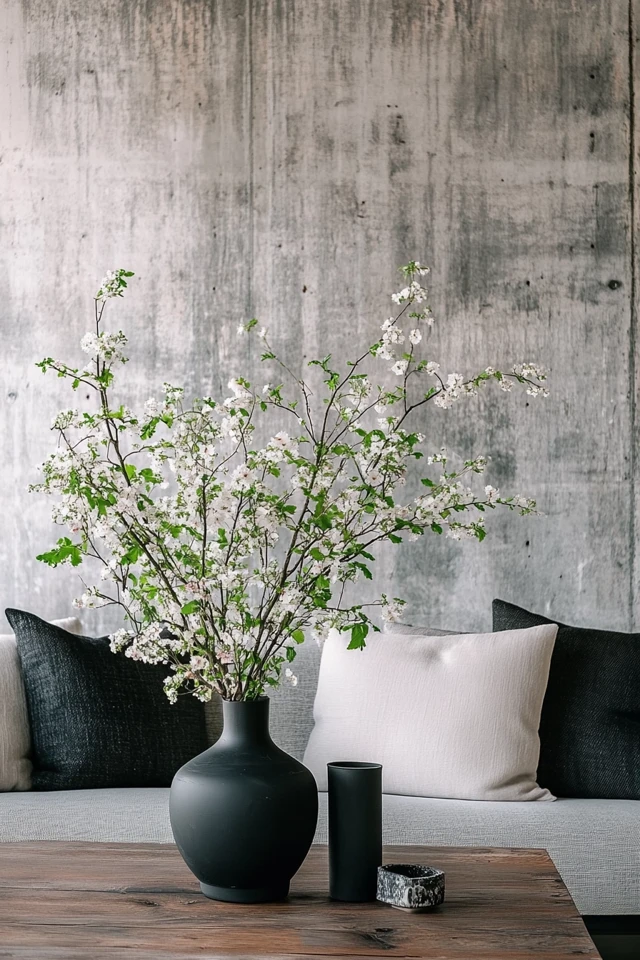Scandinavian design is constantly evolving, blending timeless principles of simplicity, functionality, and coziness with fresh, contemporary trends. Whether it’s a focus on sustainability, the integration of bold textures, or playful pops of color, Scandinavian decor has a way of staying relevant while maintaining its minimalist roots.
When I refreshed my home using these trends, I discovered that even subtle updates could make a big impact. From adding natural materials to embracing statement lighting, each element brought a sense of balance and harmony to my space. Scandinavian design isn’t just a look—it’s a lifestyle.
In this guide, I’ll take you through 10 of the hottest Scandinavian decor trends that are perfect for updating your home right now.
1. Warm Earthy Tones
Why It Works
While traditional Scandinavian design focuses on whites and grays, earthy tones like terracotta, ochre, and muted greens add warmth and depth without straying from the minimalist aesthetic.
How to Incorporate
- Add rust-colored cushions or clay vases to your living room.
- Use beige or taupe throws to soften a neutral sofa.
- Paint an accent wall in a warm, earthy hue for a cozy yet sophisticated feel.
Example:
A beige linen sofa paired with terracotta throw pillows and a clay planter creates a warm, modern Scandinavian vibe.
2. Sustainable Materials
Why It Works
Scandinavian design has always valued sustainability, and this trend takes it a step further by emphasizing eco-friendly materials and practices.
How to Incorporate
- Look for furniture made from reclaimed wood or recycled metal.
- Add decor made from natural fibers like jute, hemp, or organic cotton.
- Choose brands that prioritize ethical production and sustainable sourcing.
Styling Tip:
A dining table made from reclaimed oak paired with jute placemats perfectly embodies sustainable Scandinavian decor.
Picture Gallery
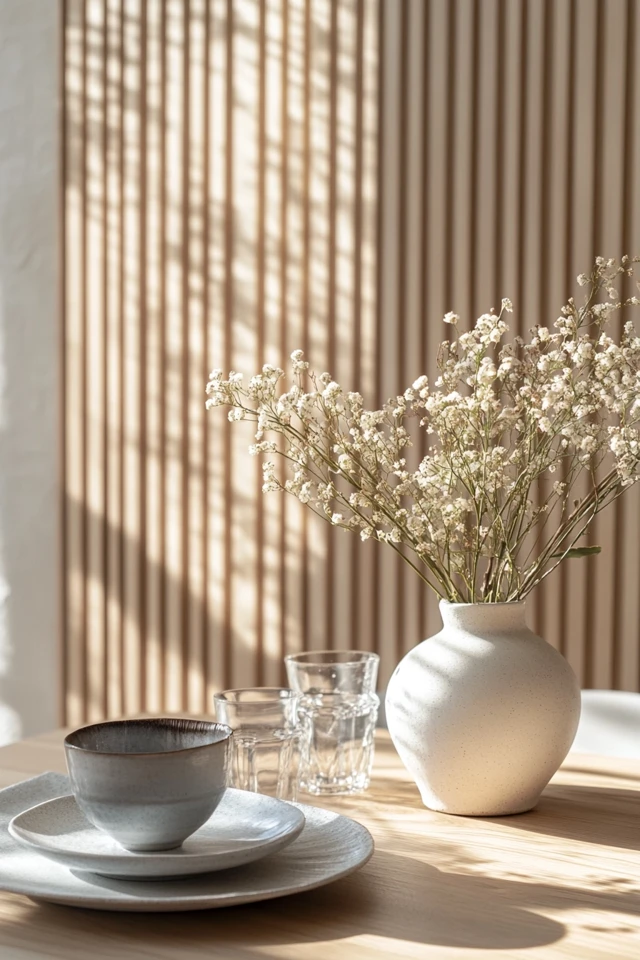
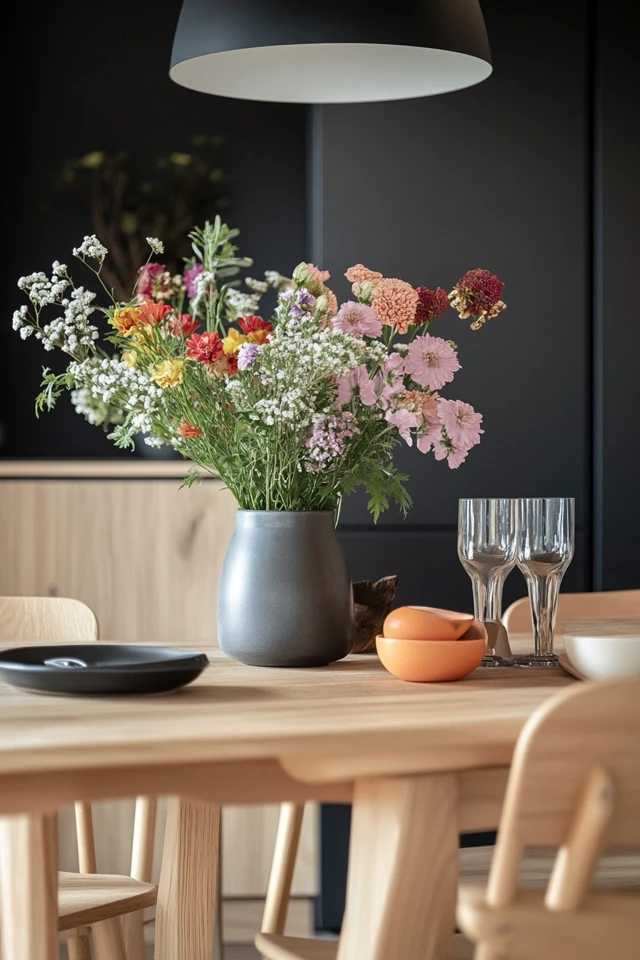
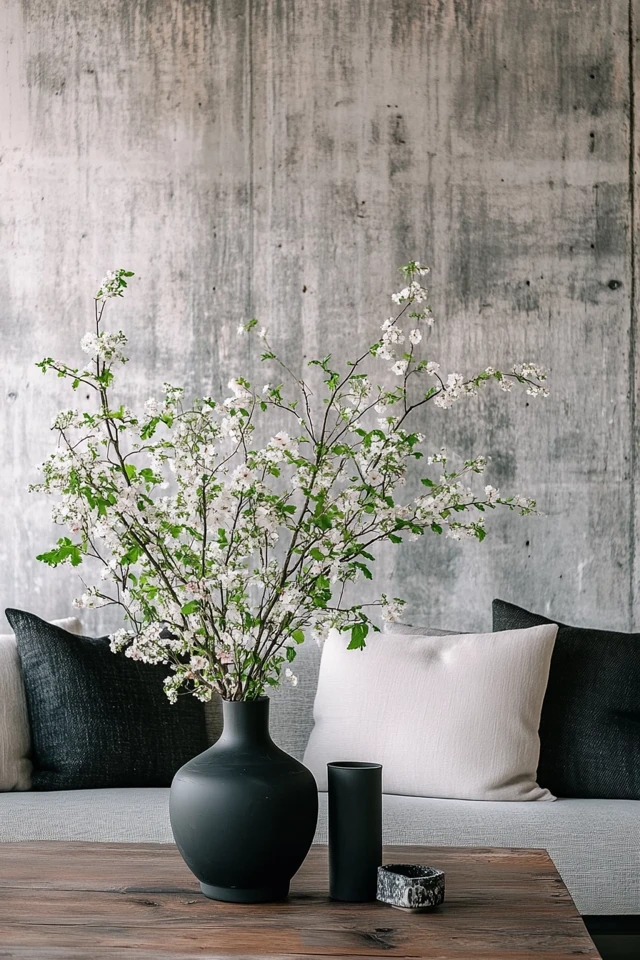

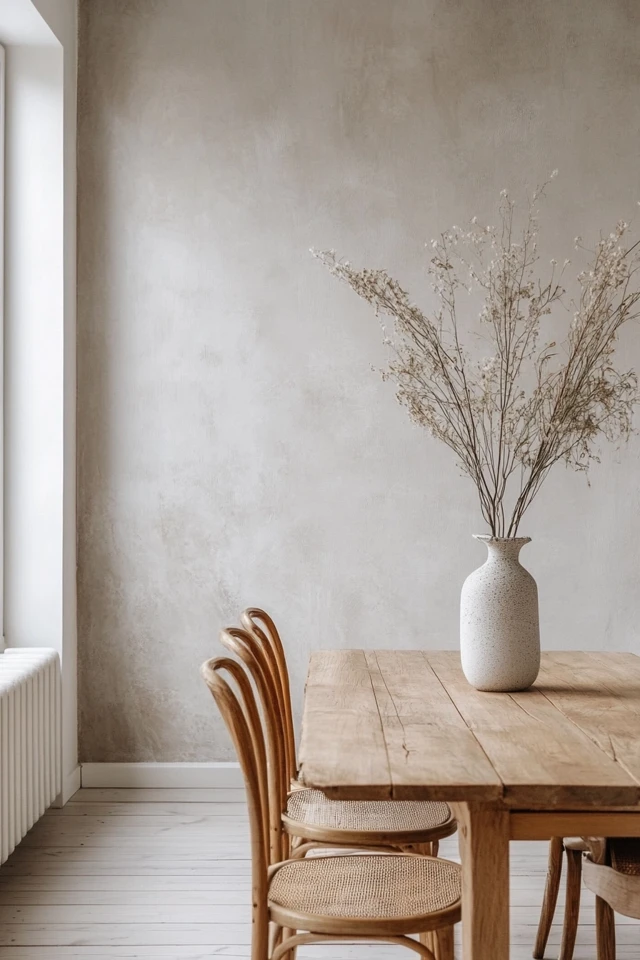
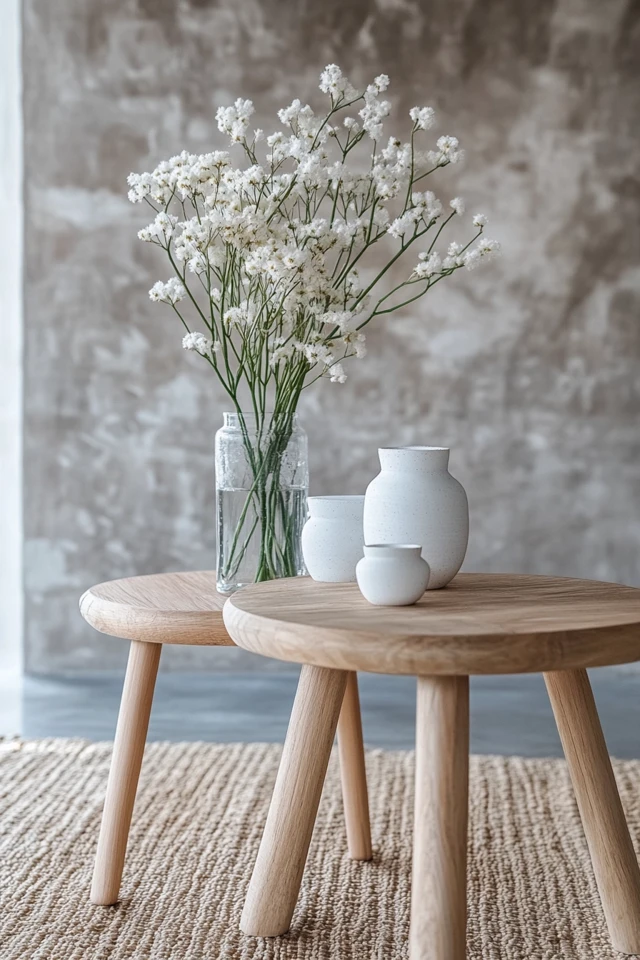

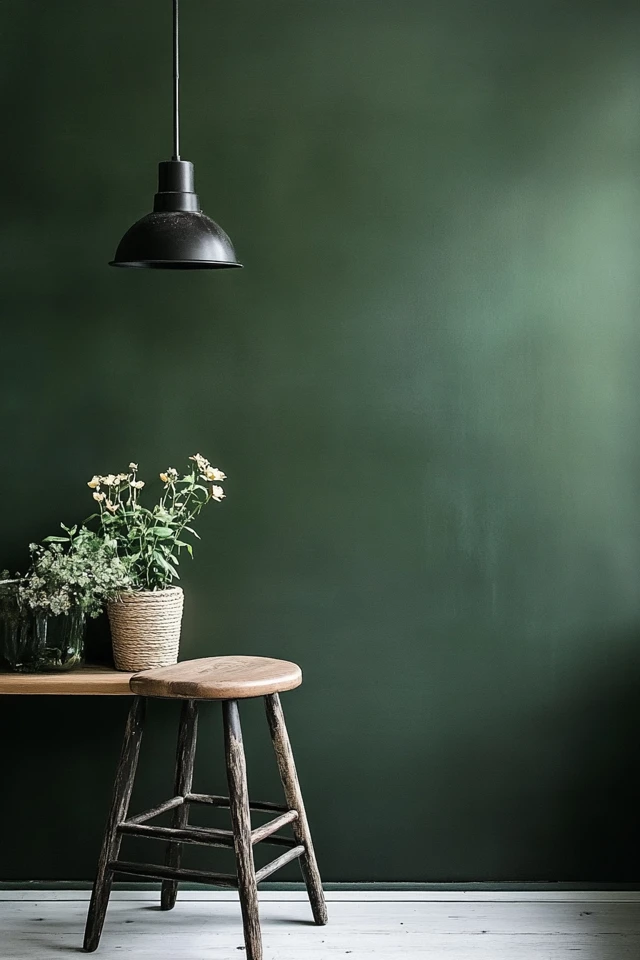
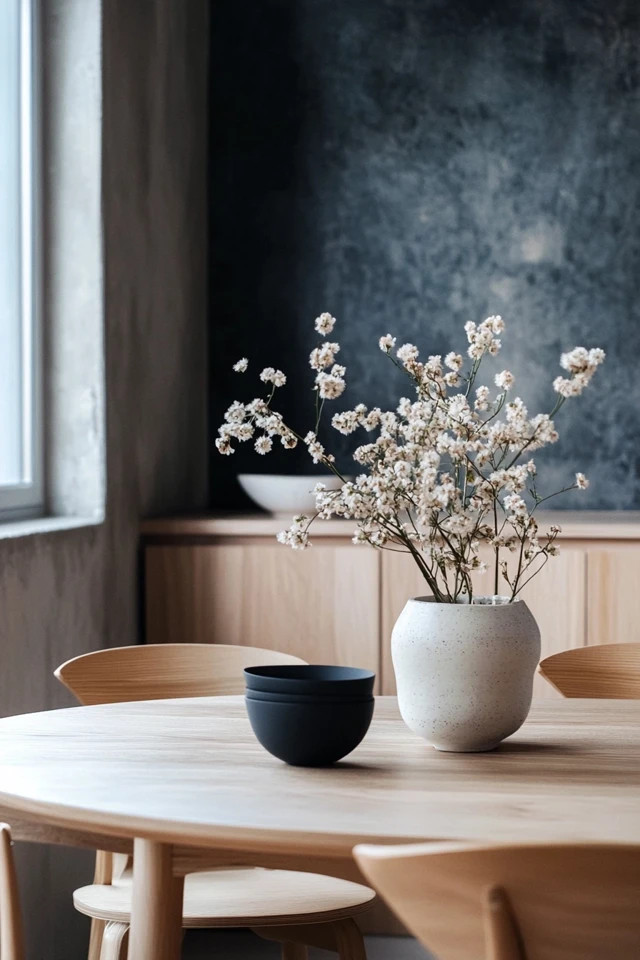
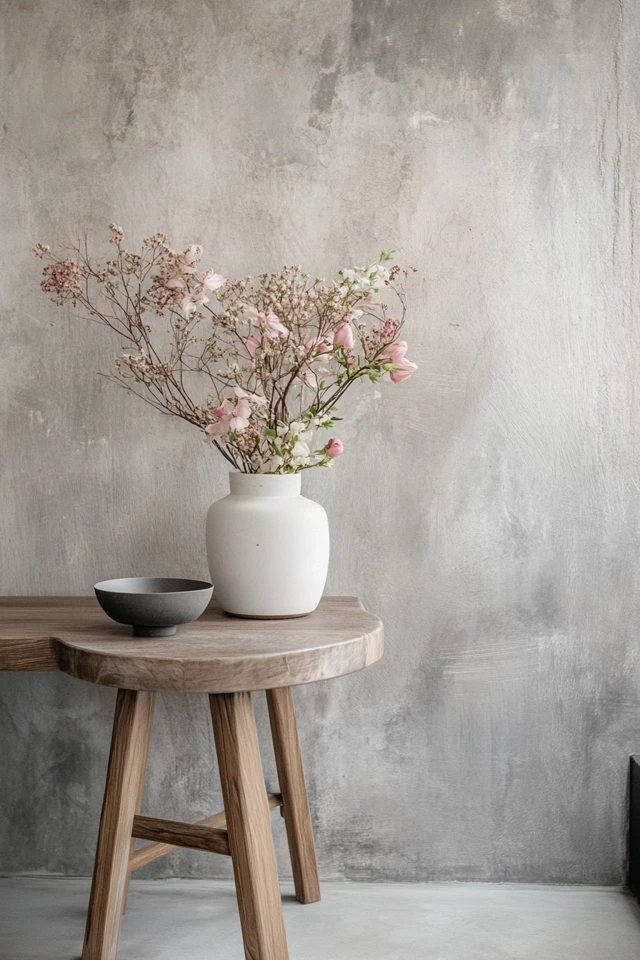
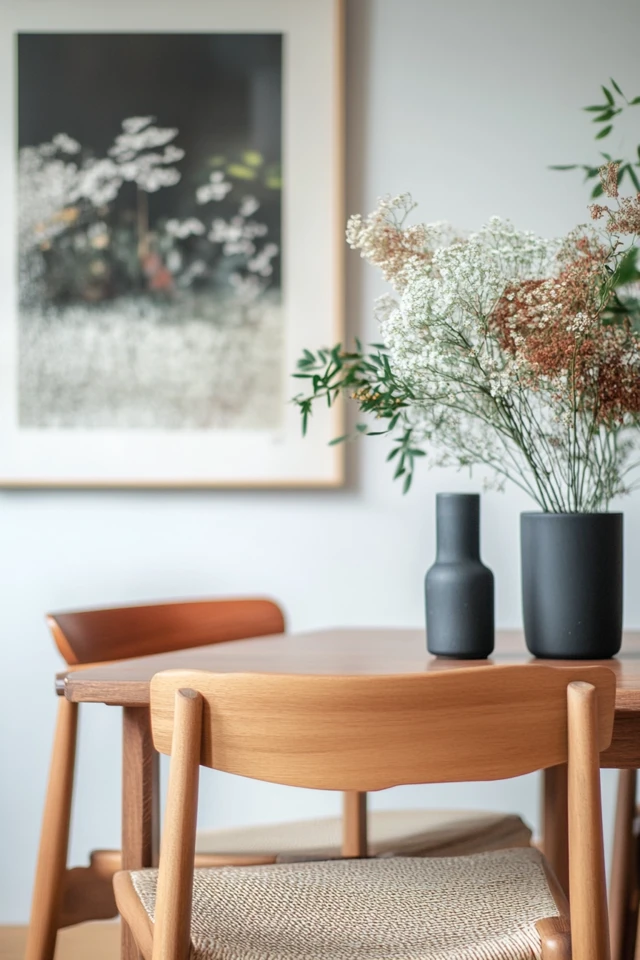
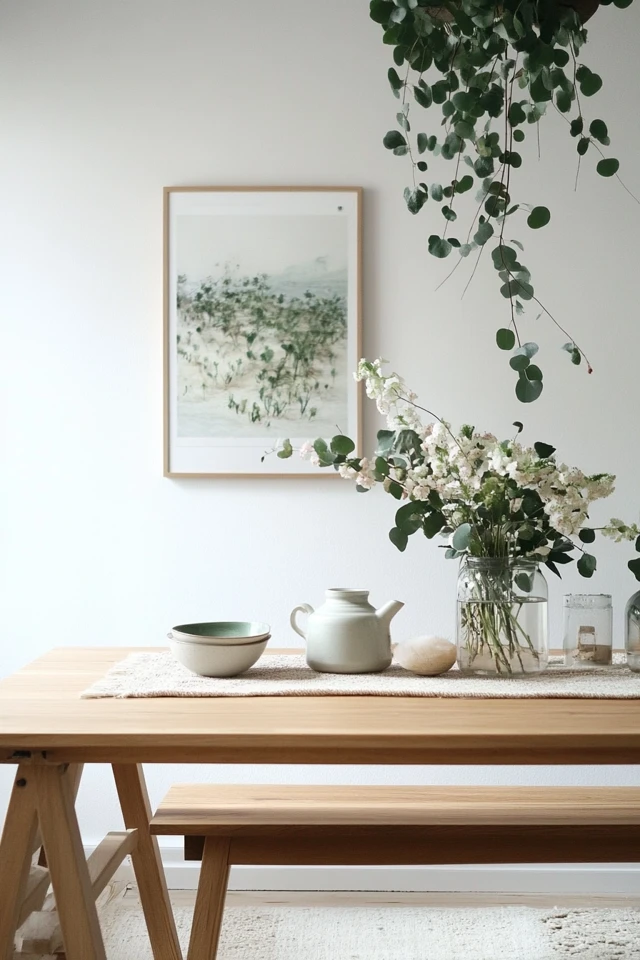
3. Curved Furniture
Why It Works
Soft, rounded shapes add a playful touch to Scandinavian spaces while maintaining a clean, modern look.
How to Incorporate
- Opt for a curved sofa or armchair to soften angular spaces.
- Use circular coffee tables or mirrors for a subtle nod to the trend.
- Pair curved furniture with straight-edged pieces for balance.
Example:
A curved beige sofa paired with a round oak coffee table creates a welcoming, Scandinavian-inspired living room.
4. Statement Lighting
Why It Works
Lighting in Scandinavian design is both functional and artistic. Statement pieces can elevate the look of a room while providing warm, ambient light.
How to Incorporate
- Choose bold pendant lights with sculptural designs for your dining or living area.
- Add modern floor lamps with unique shapes or materials.
- Use minimalist sconces for a functional yet stylish touch.
Styling Tip:
A matte black pendant light with an organic shape becomes a focal point above a natural wood dining table.
5. Mixed Textures
Why It Works
Layering textures creates a cozy, dynamic space, which is central to the hygge (comfort) philosophy of Scandinavian design.
How to Incorporate
- Layer wool throws, linen cushions, and woven rugs in neutral tones.
- Use textured ceramics or ribbed glass for decor items.
- Mix smooth leather furniture with soft faux fur accents.
Example:
A cream wool rug, paired with a chunky knit throw and woven baskets, adds richness and depth to a Scandinavian bedroom.
6. Darker Wood Tones
Why It Works
While light wood has long been a staple of Scandinavian design, darker tones like walnut and espresso are gaining popularity for their sophisticated, modern edge.
How to Incorporate
- Use dark wood dining tables or sideboards as statement pieces.
- Pair dark wood furniture with lighter elements for contrast.
- Incorporate smaller dark wood accents, like picture frames or trays.
Styling Tip:
A walnut coffee table paired with a light gray sofa creates a striking yet balanced Scandinavian look.
7. Pops of Color
Why It Works
While Scandinavian design is known for its neutral palette, adding pops of color can create visual interest without overwhelming the space.
How to Incorporate
- Choose one or two accent colors, such as sage green or dusty pink, and repeat them throughout the room.
- Add colorful cushions, art, or rugs to brighten neutral furniture.
- Keep the rest of the space minimalist to let the colors shine.
Example:
A white living room with sage green cushions and a muted pink throw feels fresh and inviting without straying from Scandinavian principles.
8. Japandi Fusion
Why It Works
Japandi, a blend of Japanese and Scandinavian design, emphasizes simplicity, functionality, and natural elements, creating spaces that feel both calming and refined.
How to Incorporate
- Use low-profile furniture with clean lines and natural finishes.
- Add tatami mats, shoji screens, or Japanese ceramics for an Eastern touch.
- Stick to a neutral color palette with warm wood tones.
Example:
A Japandi-inspired bedroom with a low wooden bedframe, linen bedding, and a single ceramic vase embodies serene simplicity.
9. Nature-Inspired Decor
Why It Works
Scandinavian design’s connection to nature continues to influence decor trends, with more emphasis on organic shapes and natural patterns.
How to Incorporate
- Use decor inspired by natural elements, like leaf-shaped trays or pebble-textured vases.
- Add live greenery or dried florals for a fresh, natural feel.
- Incorporate stone or terracotta accents for earthy texture.
Styling Tip:
A terrazzo vase filled with eucalyptus branches adds a modern, nature-inspired touch to a Scandinavian kitchen.
10. Multifunctional Spaces
Why It Works
Scandinavian design thrives in small spaces, and multifunctional furniture is a practical solution that doesn’t compromise on style.
How to Incorporate
- Use modular furniture like sofas that convert into beds or tables with hidden storage.
- Opt for wall-mounted desks or foldable dining tables in smaller homes.
- Designate zones for work, relaxation, and dining in open-concept spaces.
Example:
A sleek white storage bench that doubles as seating in a Scandinavian entryway showcases style and practicality.
How to Incorporate These Trends
- Start Small: Introduce one or two trends, like warm earthy tones or statement lighting, before committing to a full overhaul.
- Stick to Your Palette: Ensure new elements blend seamlessly with your existing neutral or muted color scheme.
- Choose Quality Pieces: Scandinavian design values longevity, so invest in timeless, well-made furniture and decor.
- Mix Old and New: Blend current trends with classic Scandinavian elements for a balanced look.
- Focus on Functionality: Prioritize decor and furniture that enhance both the beauty and practicality of your space.
Conclusion
Scandinavian decor continues to evolve while staying true to its roots of simplicity, functionality, and coziness. By embracing trends like earthy tones, mixed textures, and Japandi influences, you can create a home that feels both timeless and modern.
When I incorporated some of these trends into my own home, I found that even small changes—like adding a curved chair or switching to darker wood tones—made a big difference in the overall atmosphere. Scandinavian design is all about finding joy in simplicity, and these trends make it easier than ever to create a space you’ll love.
So, pick your favorite trends and let them inspire your next decor update, bringing fresh Scandinavian charm into your home.
FAQ
What are the key elements of Scandinavian design?
Neutral color palettes, natural materials, clean lines, and functional furniture are the foundations of Scandinavian design.
Can I mix Scandinavian decor with other styles?
Yes! Styles like Japandi or modern industrial pair beautifully with Scandinavian design, adding depth and personality to your space.
How can I add color to a Scandinavian interior?
Use muted tones like sage green, dusty pink, or rust for accents, while keeping the overall palette neutral.
What materials are popular in Scandinavian decor?
Natural materials like wood, wool, linen, jute, and ceramics are staples in Scandinavian interiors.
Where can I shop for Scandinavian-inspired decor?
IKEA, West Elm, H&M Home, Muuto, and Ferm Living are excellent sources for Scandinavian-style furniture and accessories.

